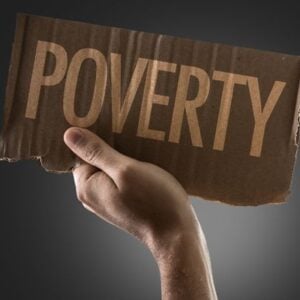A recent report by the Economic and Social Research Institute (ESRI), published in partnership with Community Foundation Ireland, reveals that over 225,000 children—approximately one in five—live in families below the poverty line in Ireland when housing costs are considered. The report, Poverty, Income Inequality and Living Standards in Ireland: Fifth Annual Report, highlights that child poverty rates have remained largely unchanged in recent years, echoing levels seen during the 2007–2009 financial crisis.
Income trends show that while nominal household incomes rose by 11.3 percent in 2023, inflation outpaced this growth, rising 14.6 percent, leaving average real incomes 3.3 percent below 2021 levels. Lower-income households were disproportionately affected due to essential expenses such as energy and food. Overall, both income poverty and material deprivation rates have remained high, with the after-housing-cost poverty rate at 15 percent, unchanged year-on-year. Compared to other EU countries, Ireland ranks 16th out of 27 in child poverty rates after housing costs.
The long-term impacts of growing up in poverty are significant. Adults aged 25–59 who experienced childhood poverty are eight percent more likely to be in poor health, 15 percent more likely to face material deprivation, and three percent more likely to be unemployed or inactive compared to peers from more advantaged backgrounds.
To achieve the government’s child poverty reduction target of 3 percent by 2030, experts recommend major reforms, including the introduction of a second-tier child benefit, closing education gaps for financially disadvantaged children, and expanding healthcare access for low-income families. Public support for targeted measures is strong, with initiatives such as DEIS schools, Equal Start programs, and free school meals receiving widespread approval as tools to break the cycle of poverty.
Government efforts to tackle child poverty include the establishment of the Child Poverty and Well-being Programme Office in 2023 and setting a new National Child Poverty Target of 3 percent by 2030. Recent events, such as the Child Poverty Well-being Summit attended by senior government officials, signal a commitment to prioritizing children’s welfare. Ministers emphasized that Budget 2026, scheduled for release on October 7, 2025, will include measures designed to significantly reduce child poverty and support vulnerable families.







